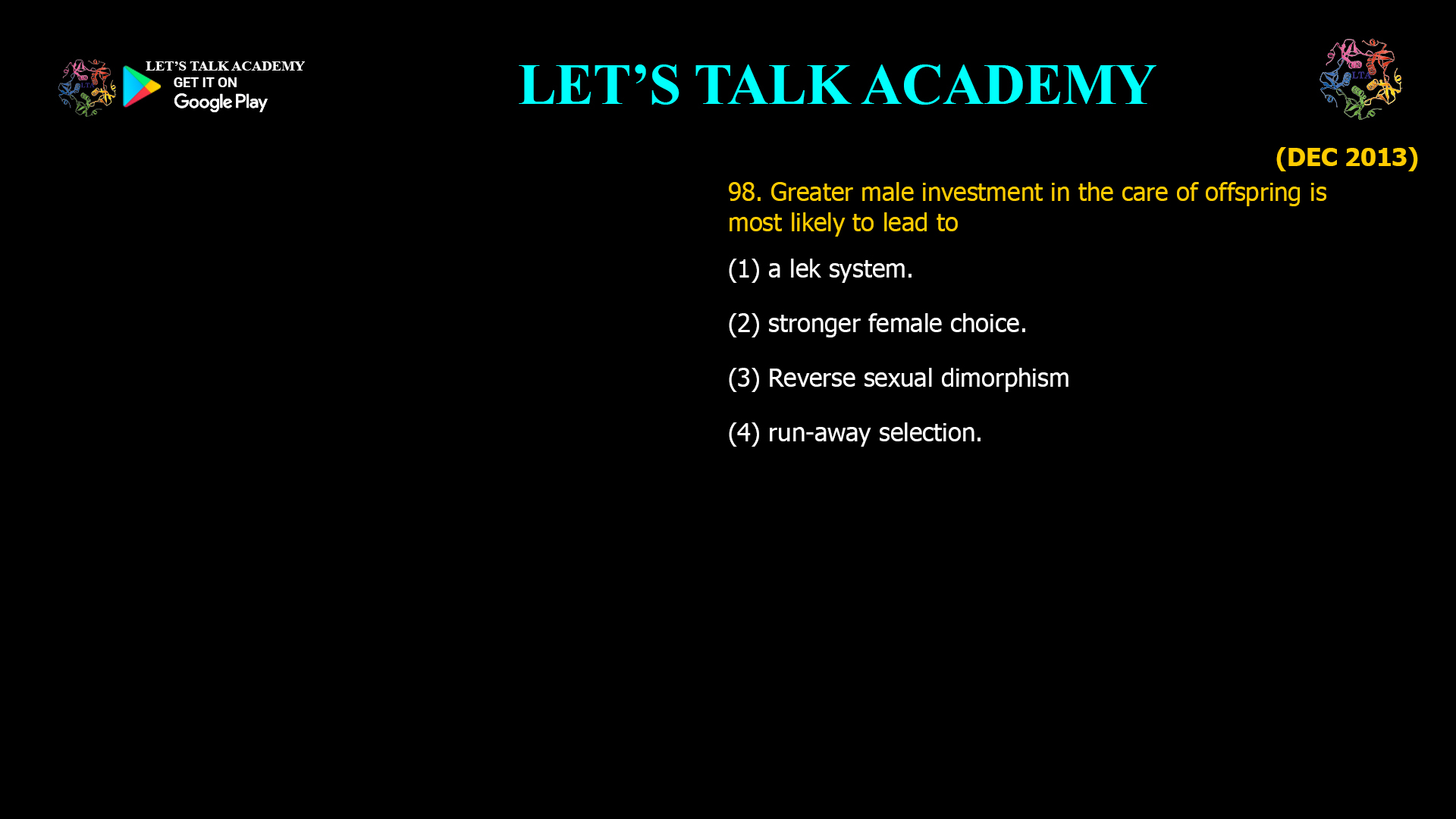- Greater male investment in the care of offspring is most likely to lead to
(1) a lek system.
(2) stronger female choice.
(3) Reverse sexual dimorphism
(4) run-away selection.
Why Greater Male Parental Care Drives Stronger Female Choice
In most animal species, females are the primary caregivers, making them the limiting resource for which males compete. This dynamic typically results in intense male competition and elaborate male displays. However, when males become the primary or equal caregivers, the balance of sexual selection shifts dramatically.
Key Mechanisms
-
Males Become a Limiting Resource: When male parental care is essential for offspring survival, females must compete for access to caring males, reversing traditional roles.
-
Female Mate Choice Intensifies: Females are more selective, preferring males who demonstrate a willingness and ability to invest in offspring care.
-
Direct and Indirect Benefits: Females gain direct benefits (such as increased offspring survival) and indirect genetic benefits by choosing males with strong parental traits.
Scientific Evidence
Research across diverse taxa—especially in fish, amphibians, and some birds—shows that female preference for caregiving males can drive the evolution and maintenance of male parental care. In these systems, sexual selection does not favor extravagant male displays or lekking behavior, but rather the ability and willingness to provide care.
-
Mate Choice Models: Mathematical and empirical studies demonstrate that when female mate choice favors parental males, selection for male care intensifies, even in the face of potential costs such as reduced mating opportunities or lower paternity certainty.
-
Behavioral Ecology: Observations confirm that in species with high male parental investment, females often actively select mates based on their caregiving behaviors, reinforcing the evolutionary trend toward stronger female choice.
Why Not the Other Outcomes?
-
Lek Systems: These are characterized by minimal or no male parental care, with males competing solely through displays.
-
Reverse Sexual Dimorphism: While role reversals can occur, they are not a direct or inevitable result of increased male care; the key driver is the shift in mate choice dynamics.
-
Run-away Selection: This process typically involves escalating male traits driven by female preference for non-parental attributes, not for caregiving behaviors.
Conclusion
Greater male investment in the care of offspring is most likely to lead to stronger female choice. As males become the limiting resource for successful reproduction, females evolve more discerning mate preferences, selecting for traits that indicate high parental investment. This shift transforms the landscape of sexual selection, highlighting the dynamic interplay between parental care and mating strategies in the evolution of animal life




1 Comment
Kajal
October 13, 2025Strong female choice